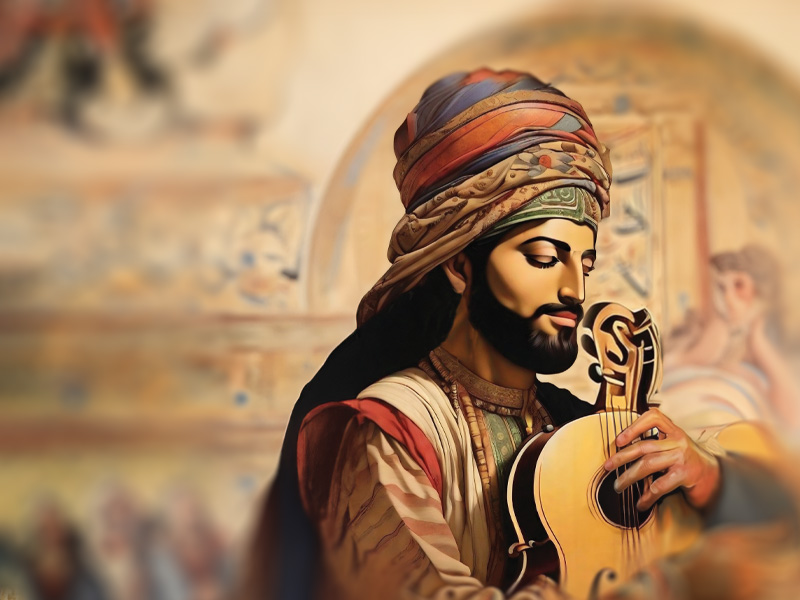Islamic Arab Music: Geography and Characteristics
Issue 64

Prof. Mahmud Qattat
Tunisia
The study of the Islamic Arab legacy demands an understanding of the universal component of a non-ethnic and non-sectarian civilisation that Islam unveiled and honoured at its very beginning.
It involved a wide variety of countries with varied histories, where the Arabic language became a means of communication. To describe the characteristics of Islamic Arab music and emphasise its diversity, one must first adopt a holistic approach that is in tune with the global dimension. A “grand musical heritage” has developed throughout time, with influences reaching well beyond the original sources (Arabs, Persians, and Turks) and into other areas of the world. These affluent streams, like a marvellously cohesive social fabric, have established and enriched the musical system and shaped a varied musical canon.
With the onset of what is known as the “Modern Arab Renaissance”, greater interaction with the Western model, and the effect of industrial technology (late 19th century), profound and rapid changes occurred in the Arab music scene. One result was a shift away from norms and a preference for new ideas. Western-style media and music education played a crucial role in solidifying a course of thought based on an inadvisable synthesis of two different musical traditions: the classical Western tonal system and the traditional Arab maqam system.
Western classical music employs a musical scale with defined intervals based on the major and minor modes, regular rhythms, vertical harmonic notation, orchestral distribution, etc.
Music and its structure, melodic and rhythmic compositions, musical instruments, sound techniques, and social functions all reveal the distinctive aspects of both systems and the areas where they diverge.
These and other distinctions are manifested through diverse practices, such as approaches to performance and instructional methods. The European tonality system is built on written traditions that require craftsmanship to implement what has been written.
The Arab and Eastern maqam systems, on the other hand, are founded on oral traditions with multidirectional and consolidated memory in line with firmly established standards within a system of diverse forms, principles, and proven creative skills. It combines acquired talent, creativity, improvisation, and composition.
These are modes passed down from instructor to student, with the latter making growing attempts to grasp and absorb the creative work in every aspect, benefiting from musical language principles while improving taste, sensibility, and creativity. This can only be accomplished by listening to a genuine artist and following in his footsteps, not through boring lessons from a schoolteacher (much as being a poet cannot be accomplished by simply studying prosody and understanding the metres of poetry).
In the midst of these inconsistencies, our musical legacy is becoming increasingly stagnant, even to the point of rejection by Arab youth and the public in general. As a result, before we lose our uniqueness and become just faint imitations of others, we need a genuine awakening to our musical legacy in terms of study, performance, and appreciation.







































































